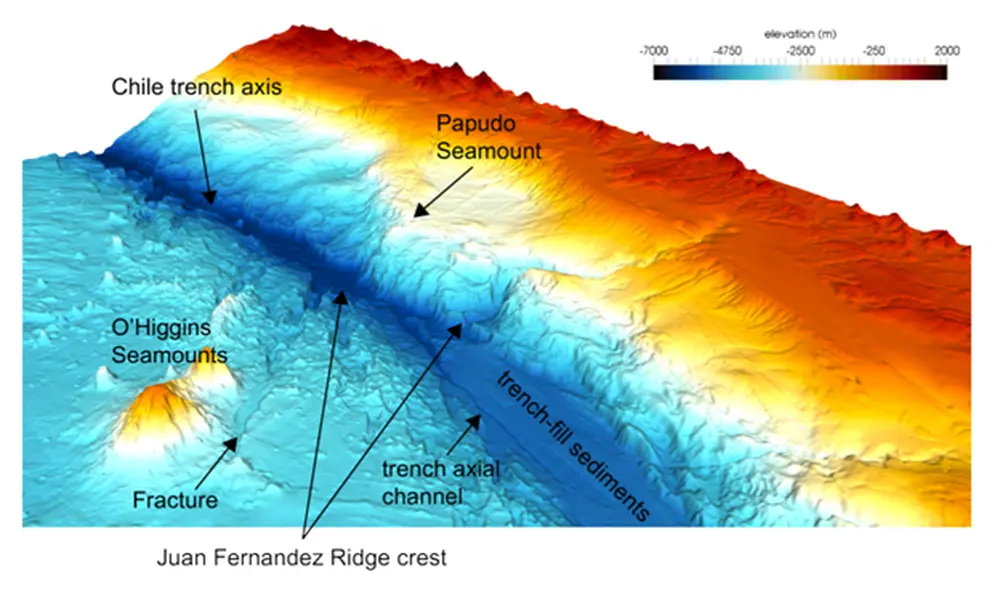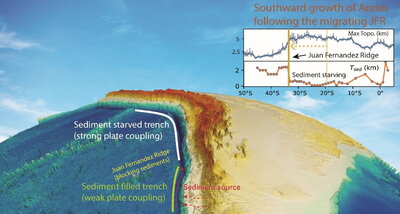
In a new paper in Nature Communications, former graduate student Jiashun Hu (now at the Southern University of Science and Technology, Shenzhen, China), Professor Lijun Liu and California Institute of Technology professor Michael Gurnis, show how the interactions between sediment flux, climate and tectonics can explain the anomalously tall central region of the Andes Mountains. Oceanic subduction zones have relatively low compressional stresses relative to continental collision zones due to the weak plate interface coupling where thin, dense oceanic crust is subducted. The question is thus: why are the Andes so tall?

The paper proposes that the Juan Fernandez Ridge, which intersects the coast of Chile (see figure), acts as a barrier to northward-migrating sediments. This ridge has existed for millions of years, slowly migrating southward with the subducting Nazca Plate, and has thus starved the northern Andean Trench of sediments. Because the thickness of trench-fill sediments is a proxy of plate coupling, with less sediment accumulation causing stronger coupling, relative starvation of sediment north of the Juan Fernandez Ridge thus helps increase plate coupling and mountain building behind the migrating ridge. The study shows the power of combining modern top-down models that account for climate-related factors with traditional bottom-up tectonic models, for uncovering the history of the Andes Mountains.
See here for the full News Bureau story and here for the Nature Communications paper.
